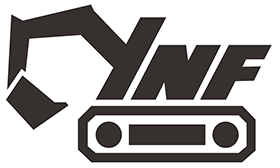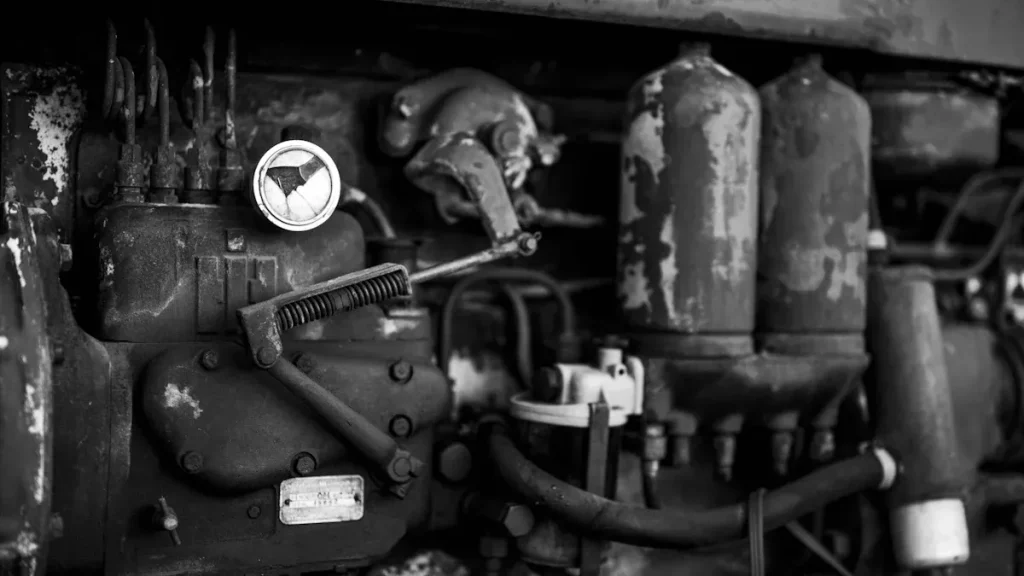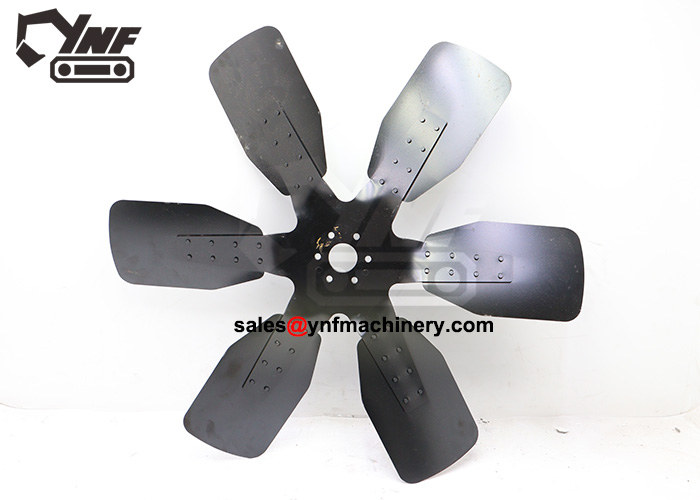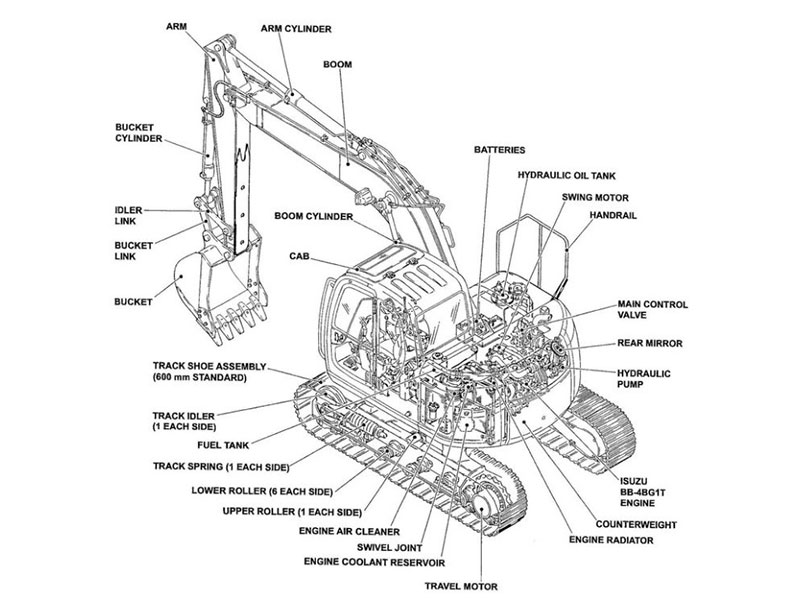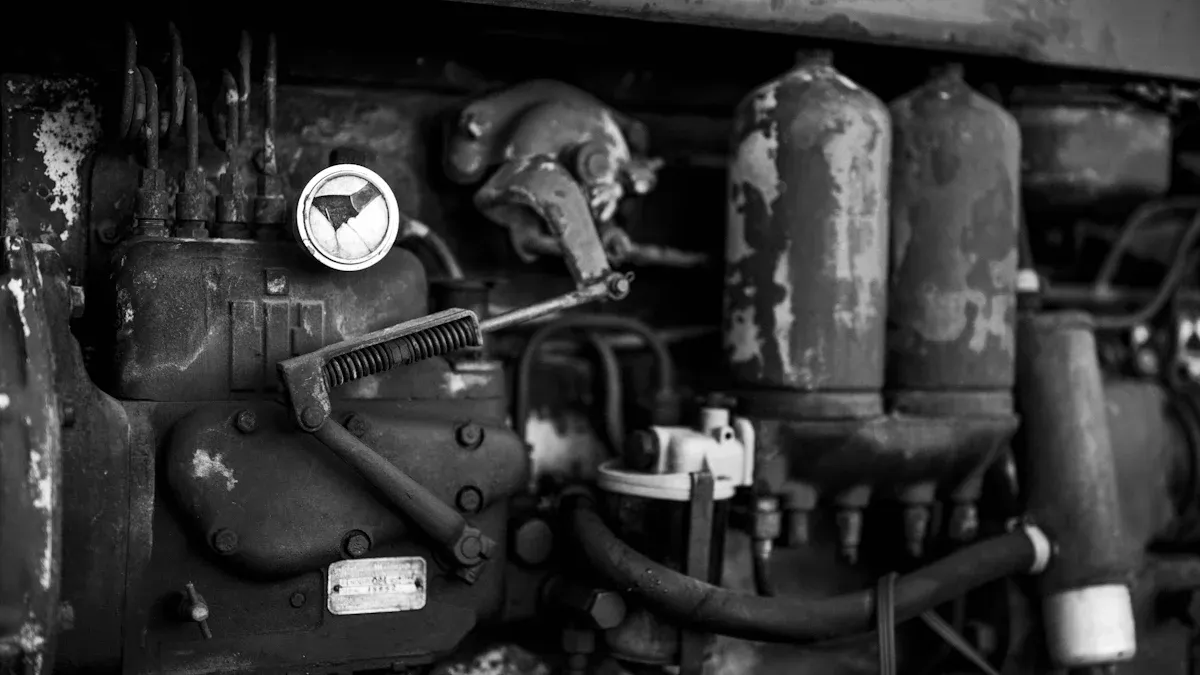
You use your excavator every day. You might move heavy soil with the bucket. You might drive the crawler over rough ground. The mount engine excavator helps keep your machine steady. When you use a crawler, the engine shakes and makes vibrations. These vibrations can hurt parts after a while. Engine mounts soak up these shakes and lower noise. This makes your excavator safer and more comfy. There are two main types:
Active mounts have a special liquid inside. They change and control shaking. These are great for big crawler machines. They also help with tough excavator offset boom jobs.
Passive mounts use strong rubber or other tough stuff. They soak up bumps in smaller excavators. They work well when the bucket is not under a lot of stress.
Check your excavator offset boom, bucket, and crawler often. This helps you find bad engine mounts early. If you skip these checks, your engine could get hurt. Repairs can cost a lot. Take care of your excavator. This is extra important if you use a crawler with an excavator offset boom. It helps your bucket work well.
Key Takeaways
Pick the right engine mount type. Use rubber mounts for light work. Use hydraulic mounts for heavy jobs. Use metal mounts for simple tasks. This helps your excavator stay steady and safe.
Look at your engine mounts often. Check for cracks, loose bolts, and strange noises. This helps you find problems early. It also helps you avoid expensive repairs.
Clean your mounts often with mild soap and water. Keep them dry to stop damage. This helps your mounts last longer.
Change mounts that are worn or broken right away. This protects your excavator’s engine, offset boom, and other parts from more damage.
Watch your mounts closely if you use an excavator offset boom. The offset boom adds stress. It needs more checks and care.
Mount Engine Excavator Types
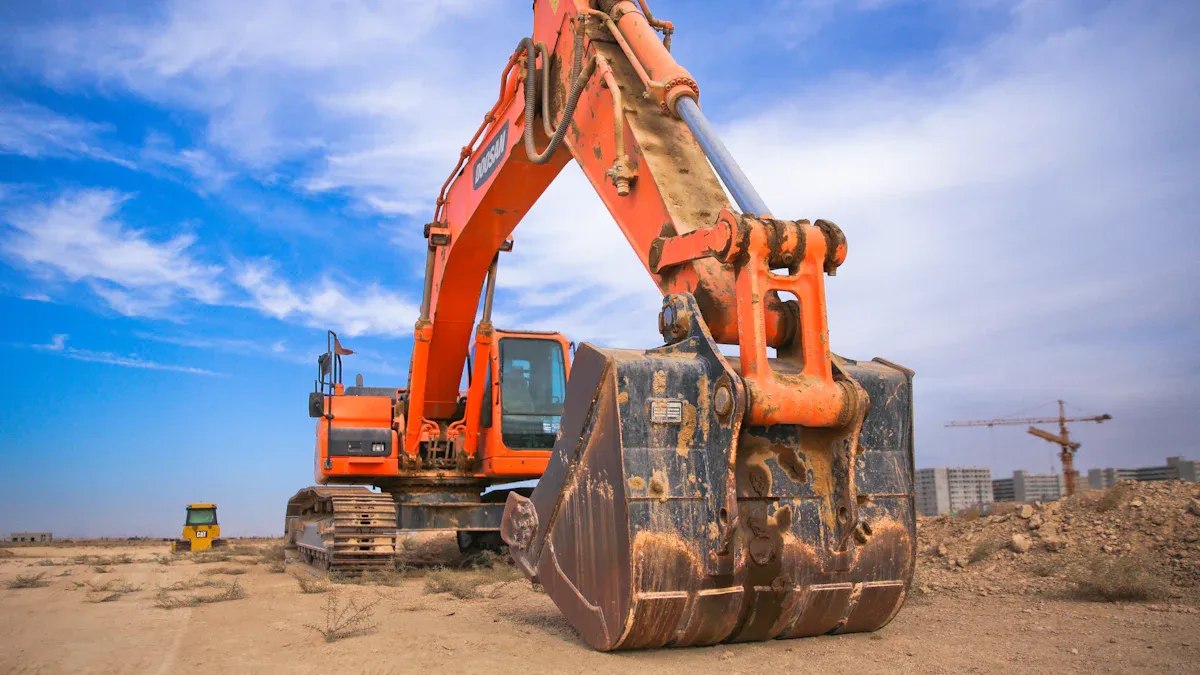
Rubber Mounts
Many crawler excavators use rubber mounts. These mounts have thick rubber that absorbs shocks from the engine. When your crawler goes over bumpy ground, the rubber mount engine excavator helps stop shaking. This keeps the bucket steady and protects the engine. Rubber mounts are good for machines with lighter attachments. You can use them on a crawler excavator with a normal bucket. They work well if you do not need heavy-duty attachments or lots of different tools.
Hydraulic Mounts
Hydraulic mounts use fluid to help control movement. You find these in bigger crawler excavators or when using an excavator offset boom. The hydraulic system inside the mount engine excavator reacts to force changes. This helps you do hard jobs with the bucket or special attachments. Hydraulic mounts give you better control over shaking. They also help with engine power and save fuel. Your crawler works smoother, especially with heavy buckets or attachments.
Metal Mounts
Metal mounts are made from strong steel or other metals. You see these in older crawler excavators or machines that need to be very tough. Metal mounts do not stop as much shaking as rubber or hydraulic mounts. They are best when you use the excavator on flat ground or with simple buckets. Metal mounts last a long time, but they can make the ride bumpier for you and your crawler.
Pros and Cons
Tip: Pick the right mount engine excavator for your work. Each type has good and bad points.
Mount Type | Vibration Isolation | Durability | Best Use Case |
|---|---|---|---|
Rubber | Good | Medium | Light buckets, basic attachments |
Hydraulic | Excellent | High | Heavy buckets, offset boom, tough jobs |
Metal | Poor | Very High | Flat ground, simple buckets |
You should pick the mount engine excavator that fits your crawler, bucket, and attachments. Think about what kind of crawler excavators you use. Check the tracks and undercarriage often. The right mount helps your excavator offset boom and bucket work better. It also protects the excavator hydraulic system and keeps engine power and fuel use good.
Excavator Engine Mount Wear
Common Symptoms
You should look for signs that your crawler excavator engine mounts are getting old. If you use your crawler a lot, the mounts can start to break down. Here are some things you might notice:
You feel more shaking in the cab, especially when you move the bucket or use heavy attachments.
You hear odd sounds, like clunks or rattles, when you use the excavator bucket or drive the crawler on rough ground.
You see damage, like cracks or tears, on the mounts when you look under the hood.
The bucket might shake more than normal, making it harder to use your attachments.
The tracks can feel less steady, especially if you use an excavator offset boom or change buckets.
Note: If you do not pay attention to these signs, you could hurt your crawler excavator engine and other parts. Finding problems early saves money and helps your excavator last longer.
Inspection Steps
You should check your crawler excavator engine mounts often. This helps you find problems before they get worse. Use these steps to check your mounts:
Look at the mounts. Check for cracks, breaks, or bent spots. Look closely at the rubber, especially if you use an excavator offset boom or heavy attachments.
See if the mounting points are worn out. If you see broken parts or the mounts look strange, you might need new ones.
Check all screws and bolts. Make sure nothing is loose or missing. Tighten any loose bolts right away. Shaking from the bucket or tracks can make them loose.
Clean the mounts and the area around them. Use mild soapy water to wash off dirt. Do not use strong cleaners that can hurt the rubber.
Dry the mounts with compressed air after cleaning. This keeps water away and stops rust or more wear.
Put grease on any spots that need it, as your manual says. This lowers friction and helps your crawler excavator mounts last longer.
Listen for weird noises when you use the bucket or attachments. If you hear something strange, stop and check the mounts again.
Always follow your excavator manual for special care tips, especially if you use an excavator offset boom or change buckets and attachments.
Tip: Checking and cleaning your mounts often helps you avoid big repair bills. Make engine mount checks part of your regular crawler excavator care.
Engine Mount Maintenance Requirements
Keeping your crawler in top shape means following clear maintenance requirements. You need to check your excavator often, especially if you use an excavator offset boom. Good maintenance helps your crawler last longer and keeps your work safe.
Routine Checks
You should make routine checks part of your daily maintenance requirements. Start by looking at the mounts on your crawler. Check for cracks, loose bolts, or any signs of wear. If you use an excavator offset boom, you put more stress on the mounts. This makes checks even more important.
Look at each mount before you start your crawler.
Use a flashlight to see under the engine and around the mounts.
Feel for any movement by gently pushing on the mounts.
Listen for new noises when you use the excavator offset boom or move the bucket.
Check the bolts and tighten them if needed.
Tip: Write down what you find during each check. This helps you track changes and spot problems early.
You should also check the undercarriage and tracks. The crawler works hard, especially with an excavator offset boom. Regular maintenance keeps your excavator safe and ready for tough jobs.
Cleaning and Care
Dirt and mud can build up around your crawler’s mounts. Cleaning is a key part of maintenance requirements. You should clean the mounts every week, or more often if you use your excavator in muddy places.
Use a soft brush to remove loose dirt from the mounts.
Wash the area with mild soap and water. Avoid harsh chemicals that can damage rubber parts.
Dry the mounts with a clean cloth or compressed air.
Check for rust on metal mounts. If you see rust, clean it off and use a rust blocker.
Make sure the area around the mounts stays dry.
If you use an excavator offset boom, you may need to clean more often. The extra movement can push more dirt into tight spots. Clean mounts help your crawler work better and meet all maintenance requirements.
Preventive Tips
You can make your crawler last longer by following these preventive tips. Meeting maintenance requirements helps you avoid big repairs and keeps your excavator running strong.
Do not overload your bucket, especially when using an excavator offset boom.
Switch attachments carefully. Sudden moves can stress the mounts.
Store your crawler in a dry place. Moisture can damage mounts and cause rust.
Use only the right mounts for your excavator. Check your manual for the best fit.
Schedule regular maintenance with a trusted mechanic. They can spot problems you might miss.
Replace mounts as soon as you see damage. Waiting can hurt your crawler and cost more later.
Keep a maintenance log. Write down every check, cleaning, and repair.
Note: Preventive care is the best way to meet maintenance requirements. Your crawler, excavator offset boom, and bucket will all work better with regular maintenance.
A good maintenance plan covers all parts of your crawler. You protect your excavator offset boom, tracks, and engine. You also save money and avoid downtime. Make maintenance requirements a habit, and your crawler will serve you well for years.
Replacing Excavator Engine Mounts
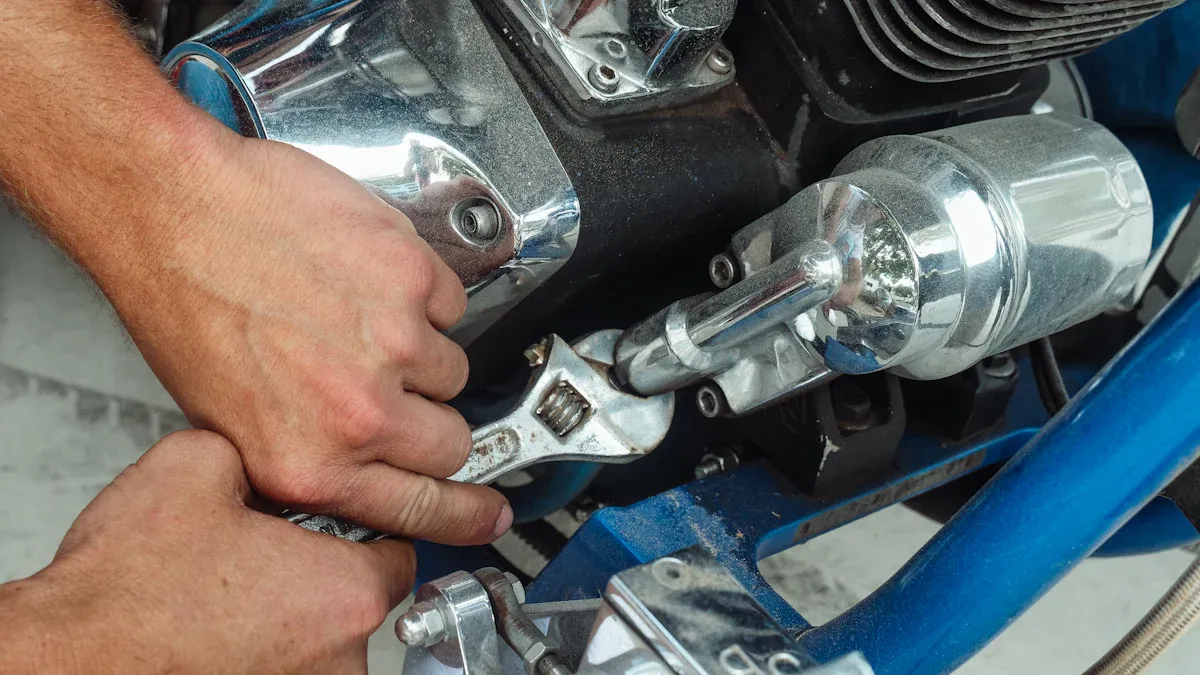
When to Replace
You need to know when to replace the mounts on your crawler. Old mounts can cause big problems for your excavator. Watch for these clear signs:
You feel strong vibrations in the cab when you use your crawler.
You hear more noise from the engine area.
The engine parts look out of line or do not fit right.
You see cracks or damage on the mounts.
The crawler shakes more when you speed up.
You notice more noise and shaking when you use the excavator offset boom.
You see tears or worn spots during your checks.
If you see any of these, you should plan a repair soon. Waiting too long can damage your crawler and make the repair cost much higher. You might even hurt the excavator offset boom or other parts.
Replacement Steps
You can follow these steps to replace the mounts on your crawler:
Park your crawler on flat ground and turn off the engine.
Use the right tools to lift the engine safely. Always use a strong jack or hoist.
Remove the bolts that hold the old mounts in place.
Take out the old mounts and check for extra damage.
Put in the new mounts. Make sure they fit your crawler and the excavator offset boom.
Tighten all bolts to the right level.
Lower the engine back into place.
Start your crawler and check for noise or shaking.
Tip: Always check your manual for special steps. Some crawlers with an excavator offset boom need extra care.
Safety Precautions
You must stay safe during this repair. Always wear gloves and eye protection. Never work under a raised engine without strong supports. Keep your work area clean. If you feel unsure, ask a professional to help with your crawler or excavator offset boom.
Choosing the Right Mount
Pick mounts that match your crawler and the excavator offset boom. Use only high-quality parts. Check the manual for the right size and type. Good mounts protect your crawler and help you avoid more repairs. Using the wrong mount can damage your excavator and cost you more in the long run.
Excavator Offset Boom Impact
Engine Mount Stress
When you use an excavator with an excavator offset boom, you put extra stress on the engine mounts. The offset boom changes how weight moves through your crawler. This design lets you dig close to walls or work in tight spaces. The engine mounts must handle more twisting and shaking. You may notice that your crawler feels different when you swing the excavator offset boom out to the side. The mounts work harder to keep the engine steady. If you ignore this extra stress, you risk engine mount damage. Over time, this can lead to excavator offset boom failure. You might see more vibration in the cab or hear new noises from your crawler. These are early signs that your excavator needs attention.
Tip: Always watch for changes in how your crawler feels when you use the excavator offset boom. Early action helps prevent bigger problems.
Maintenance Considerations
You need to add special checks to your regular excavator offset boom maintenance routine. The extra movement from the offset boom means you should inspect the engine mounts more often. Look for cracks, loose bolts, or worn rubber. Use a flashlight to check hard-to-see spots on your crawler. If you spot any damage, plan for excavator offset boom repair right away. Waiting can cause excavator offset boom failure and hurt your crawler even more.
Here are some extra steps for machines with an excavator offset boom:
Check the mounts after every long job.
Listen for new sounds when you swing the excavator offset boom.
Feel for extra shaking in the cab or at the controls.
Write down any changes in your maintenance log.
A table can help you remember what to check:
Checkpoint | How Often | What to Look For |
|---|---|---|
Engine Mounts | After each shift | Cracks, loose bolts, wear |
Crawler Frame | Weekly | Bends, stress marks |
Excavator Offset Boom | Daily | Smooth movement, no noise |
If you follow these steps, you lower the risk of excavator offset boom failure. You also keep your crawler and excavator working longer. Good excavator offset boom maintenance protects your machine and saves money on repairs.
You help keep your excavator safe and strong. Picking the right engine mounts is important. Checking them often helps your excavator work well. Taking care of your excavator offset boom and engine mounts stops sudden problems. You spend less money on repairs and do not lose time at work. A good plan for your excavator offset boom means fewer problems and less stress for your machine.
Always remember to check engine mounts when you care for your excavator offset boom. This helps your excavator last longer. You protect the engine, offset boom, and other parts. Make checking engine mounts a habit for every job.
Look at your excavator offset boom and mounts before you use them.
Change any broken parts to keep your excavator offset boom safe.
Clean your excavator offset boom and engine mounts often.
Doing these things helps your excavator offset boom work better and last longer.
FAQ
How often should you check excavator engine mounts?
You should check your engine mounts every week. If you use your excavator for heavy work or with an offset boom, inspect them after each long job. Early checks help you find problems before they get worse.
What happens if you ignore worn engine mounts?
Worn mounts can cause strong vibrations, loud noises, and engine misalignment. You might damage other parts of your excavator. Ignoring these signs can lead to expensive repairs and more downtime.
Can you replace engine mounts yourself?
You can replace engine mounts if you have the right tools and follow safety steps. Always use your manual for guidance. If you feel unsure, ask a professional for help to keep your excavator safe.
Which type of engine mount is best for heavy-duty work?
Hydraulic mounts work best for heavy-duty jobs.
They absorb more vibration and last longer.
Use them if you have an offset boom or large attachments.
How do you know if a mount fits your excavator?
Check your excavator manual for the correct part number and size. Always match the mount to your machine’s model. Using the wrong mount can cause damage and reduce performance.
